| OnLine members | | Currently: 16 |
| Total hits! |  |
| Puzzle! |  |
| Random Old Ads! | 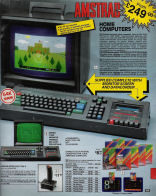 |
|
|
 |
Hardware information |
| Sam Coupe | released in 1989 |  CPU: ZiLOG Z80B @ 6 MHz CPU: ZiLOG Z80B @ 6 MHz
MEMORY: 32 KB ROM, 256KB or 512KB RAM (up to 4.5MB externally added in 1MB packs)
GRAPHICS: Palette of 128 colours. Supports 256x192 (16 colours), 512x192 (4 colours), 256x192 (2 colours) and Mode 1 at 256x192 matching the display and colors of the ZX Spectrum. Was possible to display all 128 colors on screen in static images.
SOUND: Six channel, 8 octave stereo sound by Philips SAA 1099 chip.
MEDIA/STORAGE: one or two onboard 3.5" DD drives 800KB (by Citizen) compatible with that for IBM PC (could read FAT formatted disks), 3.5 mm mono Cassette jack
|  In 1989 a long-established Spectrum peripherals supplier notable for producing the excellent Plus D and DiSCiple floppy disk interfaces for the Spectrum named MGT (Miles Gordon Technology) launched the Sam Coupe. A powerful 8-bit home computer being the natural successor to the ZX Spectrum computer. It featured a compatible screen mode and emulated compatibility to the ZX Spectrum, and it was marketed as a logical upgrade from the Spectrum. It's hardware capabilities were by far better than any other 8bit competitor home computer such Amstrad CPC and Commodore 64/128 and in some cases superior to the Amstrad CPC+. Sam machine could display staticly 128 colors at once in its hi.res mode (512 x 192 pixels), and even 32 colors on animated screens (also in the games) using special programming. In 1989 a long-established Spectrum peripherals supplier notable for producing the excellent Plus D and DiSCiple floppy disk interfaces for the Spectrum named MGT (Miles Gordon Technology) launched the Sam Coupe. A powerful 8-bit home computer being the natural successor to the ZX Spectrum computer. It featured a compatible screen mode and emulated compatibility to the ZX Spectrum, and it was marketed as a logical upgrade from the Spectrum. It's hardware capabilities were by far better than any other 8bit competitor home computer such Amstrad CPC and Commodore 64/128 and in some cases superior to the Amstrad CPC+. Sam machine could display staticly 128 colors at once in its hi.res mode (512 x 192 pixels), and even 32 colors on animated screens (also in the games) using special programming.
Apart of its powerful, for its time, hardware the system had several very impressive connectors (found on the 16bits and missing on the CPC+), such as:
- Two internal drive bays
- Slightly non-standard SCART connector offering composite video and digital and linear RGB
- 64-pin Euroconnector for general purpose hardware expansions.
- Mouse socket (proprietary format, although a converter for Atari ST style mice was later available)
- Lightpen / Lightgun via 5-pin DIN
- MIDI IN/OUT ports
- Network using the MIDI port (up to 16 machines could be interconnected).
- Atari-style 9-pin joystick port (dual capability with a splitter cable)
- Stereo sound output through 5-pin DIN.
But due to bugs in the ROM the company struggled to meet expectations and discontinued it in 1992. There was a huge problem with the video memory though. The SAM Coupé's CPU ran only around 14% faster than the ZX Spectrum CPU, yet was required to do much more work in SAM's appealing high-resolution modes to produce a similar movement on the display. A Mode 3 or Mode 4 screen uses four times as much RAM as a ZX Spectrum, so four times the work had to be done in the same time. The penalty of memory contention delay applied to all memory accesses to RAM, and not just to memory associated to the graphics data.
Emulation of the ZX Spectrum was limited to the 48K and was achieved by loading a copy of the ZX Spectrum ROM and switching to display mode 1, which mimicked the ZX Spectrum display mode and approximated that machines processor speed. The ROM was not supplied with the machine and had to be obtained from a real ZX Spectrum (I think MGT made a connector peripheral for the ZX and Sam...)! It were all a mess, especially when the market was becoming dominated by 16-bit computers and consoles! | |
 | | RGB 128-colours palette (16 on screen) | | |
|
|
|
| Our featured games | 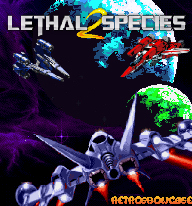 |
| Play old-school now! | 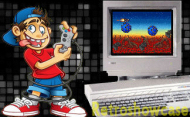 |
| Music Player! | 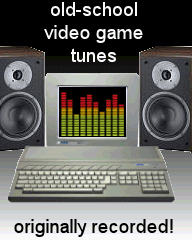 |
| Play ZX on-line!! | 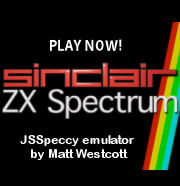 |
| Play CPC on-line!! | 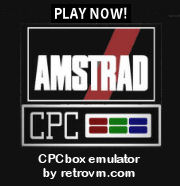 |
| Boot Screens! |  |
| Retro-games Trivia! |  |
| Old-school Crossword! |  |
| Is this my palette? | 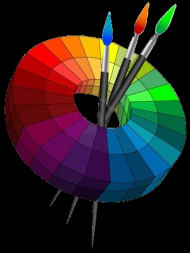 |
| The logo evolution! | 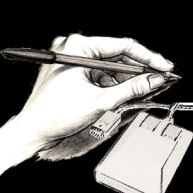 |
| Manuals! |  |
| Beat them All! |  |
|
















 CPU: ZiLOG Z80B @ 6 MHz
CPU: ZiLOG Z80B @ 6 MHz In 1989 a long-established Spectrum peripherals supplier notable for producing the excellent Plus D and DiSCiple floppy disk interfaces for the Spectrum named MGT (Miles Gordon Technology) launched the Sam Coupe. A powerful 8-bit home computer being the natural successor to the ZX Spectrum computer. It featured a compatible screen mode and emulated compatibility to the ZX Spectrum, and it was marketed as a logical upgrade from the Spectrum. It's hardware capabilities were by far better than any other 8bit competitor home computer such Amstrad CPC and Commodore 64/128 and in some cases superior to the Amstrad CPC+. Sam machine could display staticly 128 colors at once in its hi.res mode (512 x 192 pixels), and even 32 colors on animated screens (also in the games) using special programming.
In 1989 a long-established Spectrum peripherals supplier notable for producing the excellent Plus D and DiSCiple floppy disk interfaces for the Spectrum named MGT (Miles Gordon Technology) launched the Sam Coupe. A powerful 8-bit home computer being the natural successor to the ZX Spectrum computer. It featured a compatible screen mode and emulated compatibility to the ZX Spectrum, and it was marketed as a logical upgrade from the Spectrum. It's hardware capabilities were by far better than any other 8bit competitor home computer such Amstrad CPC and Commodore 64/128 and in some cases superior to the Amstrad CPC+. Sam machine could display staticly 128 colors at once in its hi.res mode (512 x 192 pixels), and even 32 colors on animated screens (also in the games) using special programming.